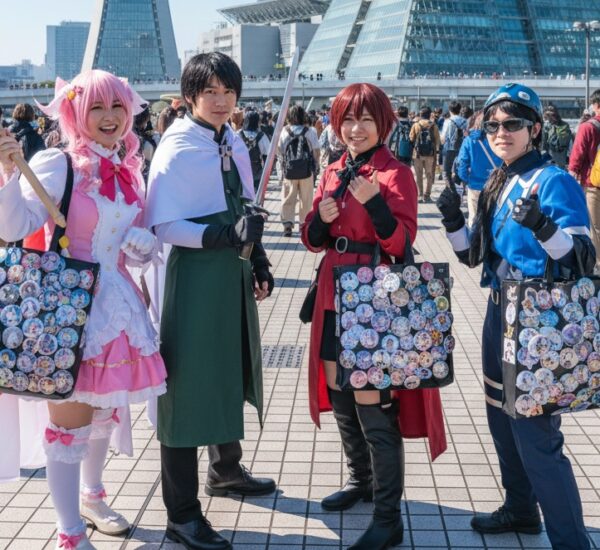Driving a car in Japan can be a wonderfully liberating way to explore the country’s stunning countryside, remote temples, and picturesque coastlines, offering freedom beyond the reach of the train network. While Japan’s roads are well-maintained and drivers are generally courteous, navigating requires an understanding of local rules, signage, and etiquette. Knowing the essential Japanese phrases for driving will not only enhance your safety but also make every part of the journey, from renting the car to finding parking, a smooth and enjoyable experience.
This comprehensive guide provides all the Japanese you need to get behind the wheel. We will cover the process of renting a car, crucial rules of the road, how to read essential signs, and the procedures for gas stations, parking, and expressways.
Chapter 1: Renting a Car
Your driving journey will start at a car rental (レンタカー, rentakā) office. To drive in Japan, you must have a valid International Driving Permit (IDP) based on the 1949 Geneva Convention, in addition to your home country’s driver’s license and passport. When you book, you will choose your car type and insurance options. It is highly recommended to opt for full coverage insurance for peace of mind.
— At the Rental Office —
予約したスミスです。
よやくしたすみすです。
Yoyaku shita Sumisu desu.
I am Smith, I have a reservation.
予約した (yoyaku shita) = (I) reserved
スミスです (Sumisu desu) = (I) am Smith.
保険を追加したいのですが。
ほけんをついかしたいのですが。
Hoken o tsuika shitai no desu ga.
I would like to add insurance.
保険 (hoken) = Insurance
を (o) = Object marker
追加したいのですが (tsuika shitai no desu ga) = I would like to add…
— Essential Rental Vocabulary —
レンタカー – Rentakā (Rental car)
予約 (よやく) – Yoyaku (Reservation)
国際運転免許証 (こくさいうんてんめんきょしょう) – Kokusai unten menkyoshō (International Driving Permit)
運転免許証 (うんてんめんきょしょう) – Unten menkyoshō (Driver’s license)
保険 (ほけん) – Hoken (Insurance)
満タン返し (まんたんがえし) – Mantan-gaeshi (Return with a full tank)
カーナビ – Kānabi (Car navigation system / GPS)
Chapter 2: Essential Road Signs
While many modern signs include English, a large number, especially in rural areas, are in Japanese only. Being able to recognize key kanji is absolutely critical for your safety and the safety of others. The most important sign is the red, inverted triangle for “Stop.” Unlike in some countries, this is always a mandatory full stop.
— Mandatory Safety Signs —
止まれ (とまれ) – Tomare
Stop. This is a red, inverted triangle sign. You must come to a complete stop.
徐行 (じょこう) – Jokō
Slow Down. This is a red-bordered, white triangle sign with the kanji inside.
進入禁止 (しんにゅうきんし) – Shinnyū Kinshi
Do Not Enter. A solid red circle with a white horizontal bar.
一方通行 (いっぽうつうこう) – Ippō Tsūkō
One Way. Usually a blue, rectangular sign with a thick white arrow.
— Other Key Signs & Vocabulary —
最高速度 (さいこうそくど) – Saikō sokudo (Maximum Speed Limit)
駐車禁止 (ちゅうしゃきんし) – Chūsha kinshi (No Parking)
入口 (いりぐち) – Iriguchi (Entrance – for expressways, etc.)
出口 (でぐち) – Deguchi (Exit – for expressways, etc.)
合流注意 (ごうりゅうちゅうい) – Gōryū chūi (Caution, merging traffic)
Chapter 3: At the Gas Station
Gas stations (ガソリンスタンド, gasorin sutando) in Japan are a mix of full-service and self-service (セルフ, serufu). At full-service stations, an attendant will guide you in and ask what you need. You simply need to state the fuel type and amount. They will handle everything, often cleaning your windows as a courtesy. Remember to check what type of fuel your rental car takes!
— At a Full-Service Gas Station —
レギュラー、満タンでお願いします。
れぎゅらー、まんたんでおねがいします。
Regyurā, mantan de onegai shimasu.
Regular gas, a full tank please.
レギュラー (regyurā) = Regular gas
満タンで (mantan de) = With a full tank
お願いします (onegai shimasu) = Please
現金で払います。
げんきんではらいます。
Genkin de haraimasu.
I’ll pay with cash.
現金で (genkin de) = With cash
払います (haraimasu) = (I) will pay.
— Essential Gas Station Vocabulary —
ガソリンスタンド – Gasorin sutando (Gas station)
セルフ – Serufu (Self-service)
レギュラー – Regyurā (Regular gas)
ハイオク – Haioku (High-octane gas)
軽油 (けいゆ) – Keiyu (Diesel)
満タン (まんたん) – Mantan (Full tank)
Chapter 4: Parking and Toll Roads
Parking (駐車場, chūshajō) in cities can be expensive and challenging to find. The most common type is “coin parking,” where a lock rises under your car after you park. To leave, you enter your parking spot number into a central machine and pay the fee. For long-distance travel, you will likely use expressways (高速道路, kōsoku dōro), which are toll roads. Your rental car will likely have an ETC (Electronic Toll Collection) card, which is the easiest way to pay.
— Finding and Using Parking —
近くに駐車場はありますか。
ちかくにちゅうしゃじょうはありますか。
Chikaku ni chūshajō wa arimasu ka?
Is there a parking lot nearby?
近くに (chikaku ni) = Nearby
駐車場 (chūshajō) = Parking lot
はありますか (wa arimasu ka) = Is there?
— Vocabulary for Parking & Tolls —
駐車場 (ちゅうしゃじょう) – Chūshajō (Parking lot)
コインパーキング – Koin pākin-gu (Coin parking)
空 (あき) – Aki (Empty / Available spot)
満 (まん) – Man (Full)
高速道路 (こうそくどうろ) – Kōsoku dōro (Expressway / Toll road)
料金所 (りょうきんじょ) – Ryōkinjo (Toll gate)
一般 (いっぱん) – Ippan (General lane – for cash/credit at toll gates)
ETC (イーティーシー) – Ī Tī Shī (Electronic Toll Collection system)
Read More:



